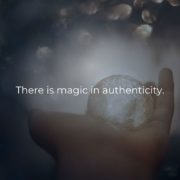Resolving Conflict – The Authentic Way
We’ve all heard that differences are necessary in any relationship, team, or organization. After all, if we were all the same we wouldn’t have conflict. And without conflict you don’t learn, grow, or create anything new. The challenge is how to make conflict productive. How do you use conflict to discover, expand, and create rather than damage, destroy, and diminish? Have you ever:
- Found yourself criticizing a colleague and avoiding them?
- Had trouble sleeping because you were obsessing about a frustrating situation with a co-worker?
- Been upset when you learned that you would be working with a certain person on a project?
- Said to yourself, “If it weren’t for you, we could get along!”
In our courses on conflict resolution, we teach people the skill of being authentic and direct. First, let’s look at the indirect or inauthentic ways that people use to deal with conflict. Inauthentic ways of avoiding a resolution indicate that unresolved anger is being brought into your workplace and include: arguing, avoiding contact, excusing the conflict (not wanting to “make a big deal out of it”), sarcasm, insults, bullying, unfocused busyness, yelling, depression, complaining.
Guidelines for resolving conflict authentically
- Appreciate conflict. Because one of the main purposes of your life is to learn and grow, you might as well accept that as long as you are alive, conflict will be a part of your existence. When we say “resolve” we are not implying that the conflict is “over.” Resolve means it is worked through – constructively, courageously, and with civility – so that you can be more effective.
Take accountability. If you are irritated or in conflict, something within you is seeking to grow and you have an opportunity to learn something about yourself. Taking accountability is not the same as blaming yourself. It means that you decide that all blame is a waste of time and that all change begins with you. “If it is to be, let it begin with me.” If something is irritating you, start by looking inward. - Set boundaries around your anger. This is another aspect of accountability. There are certain ways of expressing anger that are never appropriate in the workplace, or elsewhere. This includes rage (uncontrolled anger), demeaning put-downs, degrading people, and yelling. If you can’t be mature enough to set these kind of parameters around your anger, then you need to seek help. While everyone has a right to their feelings, with this right comes a responsibility to deal with them in a responsible, constructive, and mature manner.
- Be willing to understand. It is empowering to have a person truly listen to you without judgment or solutions. Understanding is different than agreement. If you want to influence another person you must be willing to fully appreciate their point of view and the emotional force of their belief. A willingness to understand is your opportunity to embrace all aspects of a conflict, not just the positions, but all the emotions and beliefs of both sides.
- Assess goodwill. Early in my marriage counseling career, I became completely exasperated after working for several weeks with a couple. I finally asked them, “Do you want this relationship to work?” It was the first time they agreed on anything. They looked at me and in unison said “No!” I learned a vital lesson that day about mediating. Ask this question in the first session! The Dakota Nation tribal wisdom says that when you discover you’re riding a dead horse, the best strategy is to dismount. If there is not even one small spark of desire from both parties to work on a relationship, then it is best to get off and get on with your life. You simply can’t have interdependence in a relationship without good-will.
- Reach for the expectations beneath the surface of the conflict. Like the oil-light on the dashboard of your car, conflict is an indicator that something is missing. It doesn’t help to put a piece of tape over the gauge any more than it helps to suppress your anger or pretend you aren’t annoyed. If you are the one who is irritated, look inside for what you want and take responsibility to meet that need. If there is good-will in a relationship, you can discover and share these needs with each other. If you want to get to the root of what is irritating another person, take time to explore their interests and expectations, and support them to meet their needs.
- Let go. There’s an old saying in my work around embracing change that says, “Build a bridge and get over it.” We all need a support system and a process for letting go of resentments – the unresolved anger, hurts, and betrayals that linger and poison you – that spill over into our relationships and our lives. No one can make you happy or meet all your needs, but what we can get from a support system are insights into the conflict and the courage to let go so we can get on with our lives.
- Strive for a higher purpose. Work without a vision is drudgery, and in the midst of drudgery, people will inevitably create meaningless conflict to entertain themselves. The aim of authentic conflict resolution is to transcend and include differences of perspectives, interests, and desires. A shared purpose, vision and values will help you do this. This is true in marriages, teams, community associations, and organizations.
- Pay attention to your values. Participating in your relationships at work with authenticity means living in accord with your values. Two critically important values in conflict resolution are honesty and respect. Telling someone in a meeting that their idea was stupid may be honest, but it’s not respectful. On the other hand, saying it was “interesting” when you think it’s stupid, may be respectful but it’s not honest. Conflict resolution – the authentic way – requires that you hold each of these values courageously and firmly as you move toward understanding and negotiation. You’ll never get it perfect, so strive for realness, not perfection. Authenticity is not a destination; it’s a method of travel.









